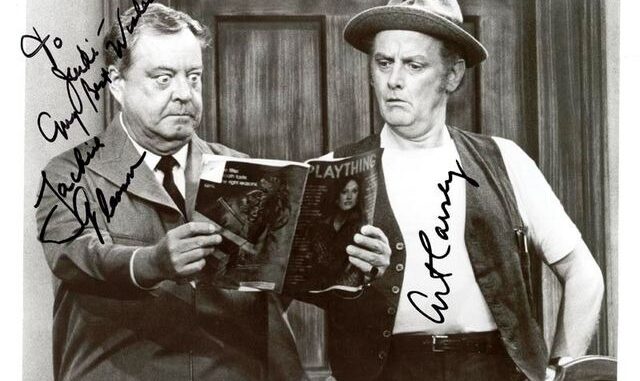

‘The Honeymooners,’ Still Striving, but Now Tunefully
MILLBURN, N.J. — Four different actors are being greeted with entrance applause at Paper Mill Playhouse here, which is unusual, because none are household names or local favorites. The applause is for their characters, some of the most beloved that television has produced. These performers draw a warm welcome simply by looking reasonably like them.
The four are the stars of “The Honeymooners,” a world-premiere musical based on the 1950s CBS sitcom, and that entrance applause says a lot. This musical knows that fans of the TV series are legion and that its job is to hit their sweet spot again and again, which it does expertly. Don’t look for innovation or intellectual challenge here; this show is content just to give you a nostalgia bath. And it’s a darned enjoyable one thanks to some fine performances and a couple of impressive musical numbers.
Michael McGrath, a veteran of Broadway shows like “Nice Work if You Can Get It” and “She Loves Me,” plays Ralph Kramden, the Jackie Gleason role, and the imitation is pretty good. (Picture Nathan Lane impersonating Gleason and you’ll have the look and sound of Mr. McGrath.) The first of the four whom we see, though, is Leslie Kritzer, whose Alice Kramden, as in the original, is the calm and caustic anchor of the foursome. Ms. Kritzer nails that persona, but if she seems to be letting others have most of the attention, just wait; she eventually delivers a showstopper.

Michael Mastro, complete with that goofy hat, is Ed Norton, Ralph’s bumbling best friend, and Laura Bell Bundy is Trixie Norton, Ed’s wife. The story is, essentially, that of practically any of the show’s 39 episodes: Ralph and Ed pursue a get-rich-quick scheme that they hope will elevate them out of their mundane lives — Ralph as a bus driver, Ed as a sewer worker.
In the TV show, the pair’s grand plans often never got beyond the walls of Ralph’s humble Brooklyn apartment. Here, though, they are transported to Madison Avenue after they win a jingle contest and are hired by an advertising concern. That might cause trepidation among fans — it seems uncanonical. But relax; it works surprisingly well and gives Paper Mill a chance to deploy some of the lavish sets (here, by Beowulf Boritt) that are among its signatures.
John Rando, a Tony winner for “Urinetown,” directed the show, which has been in development for years and seems like a Broadway candidate. The book is by a pair of TV veterans, Dusty Kay and Bill Nuss, and they display a fine instinct for the kind of button-pushing that would play well with a tourist-heavy Times Square audience.
Call-outs to some of the original show’s signature lines, scenes and episodes are sprinkled throughout, but not so heavily that they become tiresome. And the story finishes off with a sweet meta flourish that won’t be spoiled here. If the final scene lacks credibility, well, the TV series, too, sometimes was constrained by its need to keep Ralph in his Brooklyn box.

The musical numbers (the lyrics are by Peter Mills, the music by Stephen Weiner) propel things along nicely, making good use of a chorus line of dancing bus drivers/sewer workers (choreographed by Joshua Bergasse). An Act I number called “The Madison Avenue Line” is particularly hilarious, and as Act II opens, Mr. Mills shows that lots of things rhyme with “to the moon.” Later, in Act II, Mr. Mastro gets an amusing, sewer-themed patter song, “Love Gone Down the Drain.”
And then there’s the Act II solo for Ms. Kritzer. It comes just as you’re thinking that the old-school musical formula being worked here might have grown wearying: “Oh, now here come’s Alice’s obligatory solo.” Ms. Kritzer blows your cynicism away. The song is called “A Woman’s Work,” but the lyrics hardly matter; Ms. Kritzer’s scatting brings the house down.
“What is Alice Kramden doing singing a jazz number?” you might find yourself asking. If you do, you’re thinking way too hard about this pleasantly fluffy confection.
